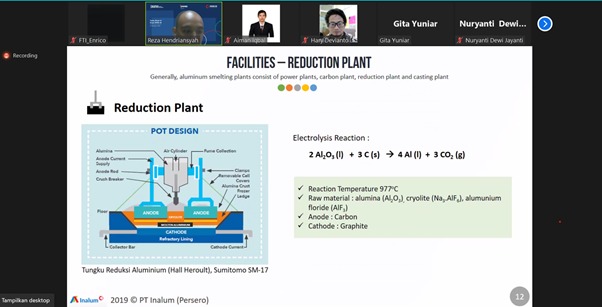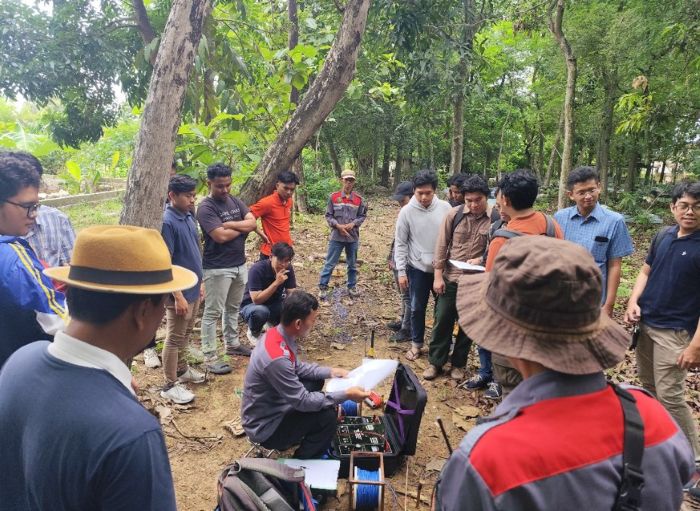Guest Lecture of Chemical Engineering Study Program Discusses Aluminum Smelting Process to Produce Various Products
By Adi Permana
Editor Adi Permana

BANDUNG, itb.ac.id--Chemical Engineering Study Program, Faculty of Industrial Technology, ITB held a guest lecture for the TK4030 Industrial Electrochemical Technology course on Monday (11/8/2021). This guest lecture is entitled “Introduction of Aluminum Smelter Process”. The material in this lecture was delivered by Assistant Officer Process Engineer PT. Indonesia Asahan Aluminum (INALUM) who is also an alumni of the 2015 ITB Masters in Chemical Engineering, Reza Hendriansyah, M.T.
This lecture begins with a brief explanation of the aluminum smelting industry, especially Indonesia. “In general, aluminum smelting uses the Hall Heroult Process which utilizes an electrolysis process. Alumina will be electrolyzed in an electrolyte solution (cryolite) at a temperature of around 970 C,” explained Reza.
He also explained that alumina is reduced to molten aluminum and precipitates at the cathode, while the anode made of carbon is oxidized to carbon dioxide. The molten aluminum will then be molded according to the desired product specifications.
Then, Reza explained the various aluminum smelting facilities and processing facilities at PT INALUM. First, there is the Carbon Plant, which functions to produce anode blocks. The Carbon Plant consists of a Green Plant with a production capacity of up to 185000 GB per year, a Baking Plant with a production capacity of up to 192000 tonnes BW per year, and a Rodding Plant with a production capacity of up to 157750 anode assembly per year. The Anode Block serves as the electrode in the Reduction Pot.
Next is the Reduction Plant, owned by PT INALUM, which has a production capacity of 250 thousand tons per year. This Reduction Plant is the site of the iron-making process for a new era, which utilizes natural gas to reduce iron ore to produce Direct Reduced Iron (DRI). The raw materials used in this process are alumina, cryolite, and aluminum fluoride. In addition, the metal tapping process and parameter control also occur at the Reduction Plant. “In the parameter control process, we added AlF3 material to lower the temperature so that the operating temperature range remains normal,” explained Reza.
From the various processes that have been described, he also explains some of the products produced by PT INALUM. First, there is Primary Aluminum Ingot, namely aluminum ingots which will usually be re-melted to make various products, such as automotive materials, namely wheels, to packaged commodities such as food and beverage cans. Inalum’s second flagship product is billet aluminum.
The aluminum billet is shaped like long pipes, unlike aluminum ingots in bars. The aluminum billet is also very important for construction because it can be used for construction materials. Lastly, aluminum alloy is another derivative of aluminum products. This product is said to have high market potential, considering that aluminum alloy is a product that needs to be melted down to make other materials.
Of course, in addition to producing quality products, the industry must also think about environmental sustainability. Therefore, PT INALUM also has the technology to reduce the dangers of air waste generated from the production process. “The gas cleaning system functions to make the gas that comes out into the air clean,” said Reza.

.jpg)
.jpg)
.png)
.jpg)
.jpg)



